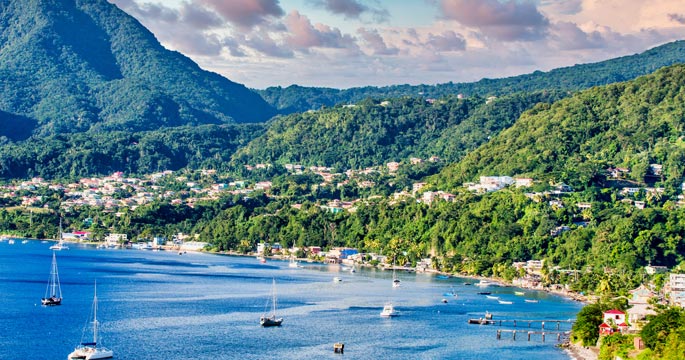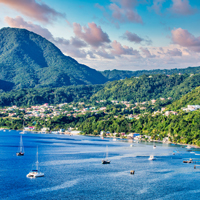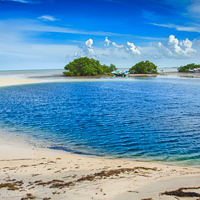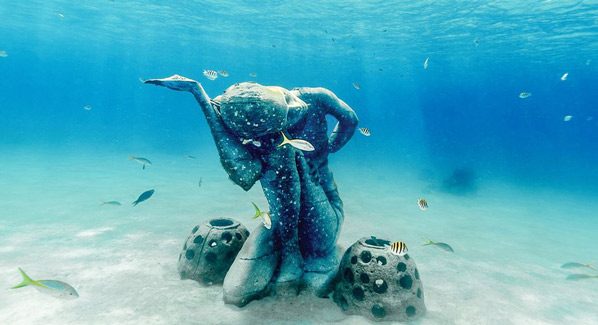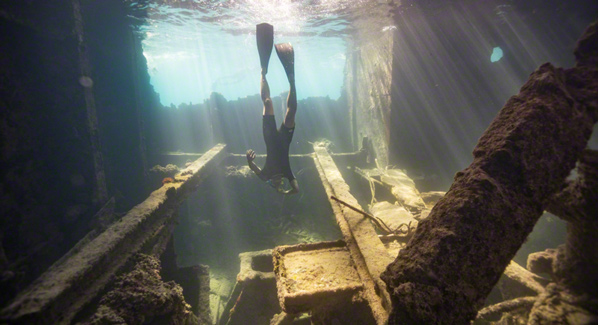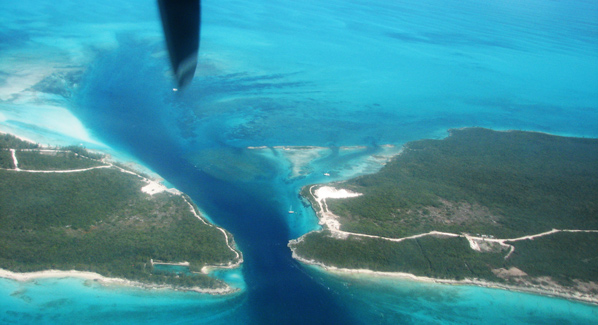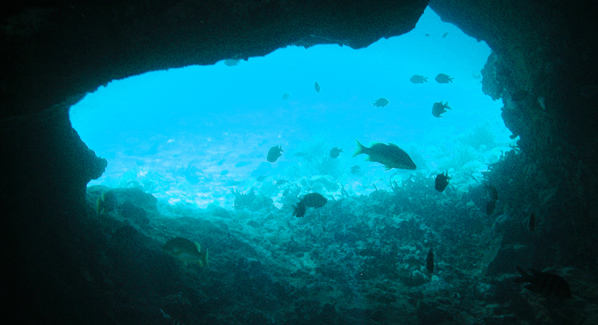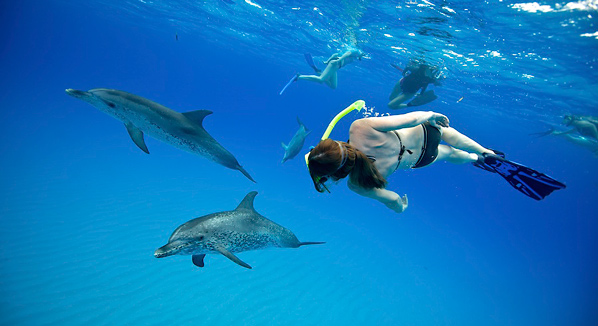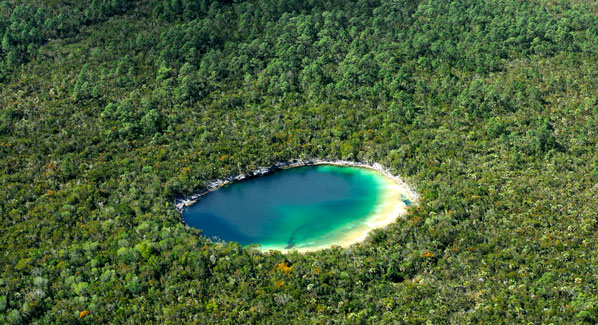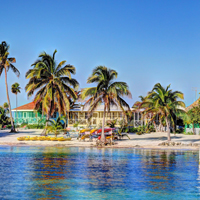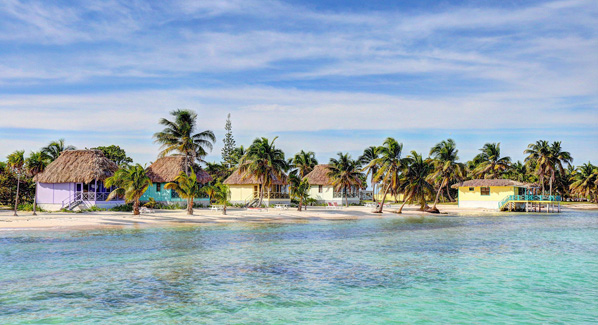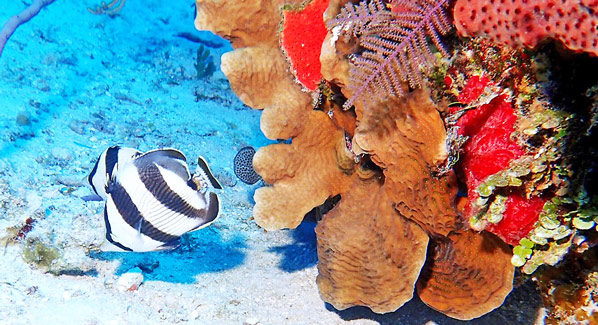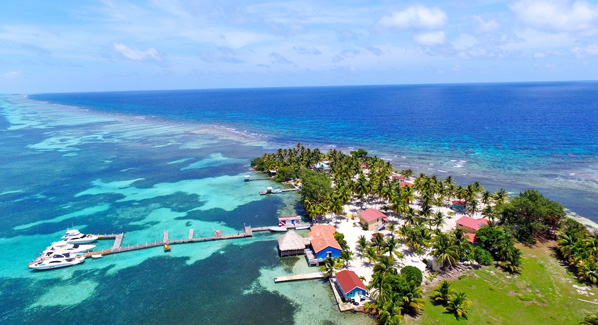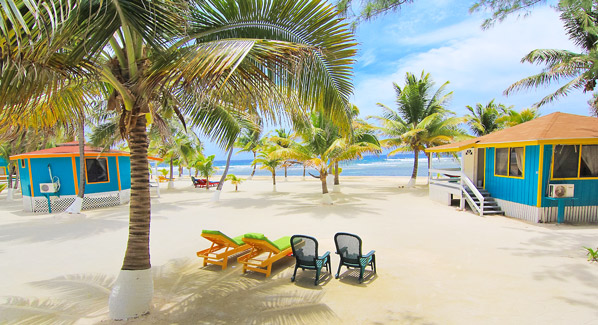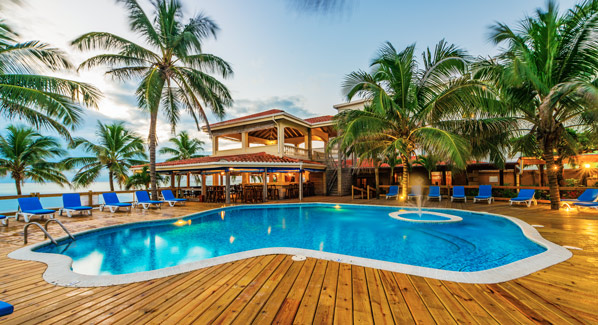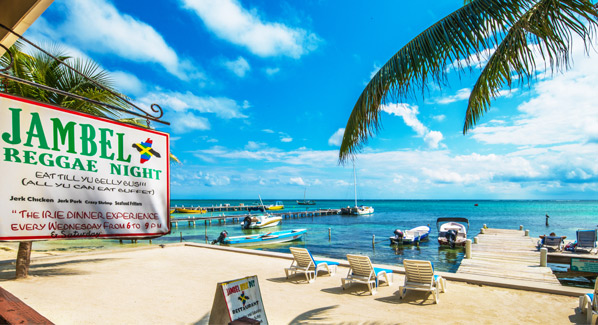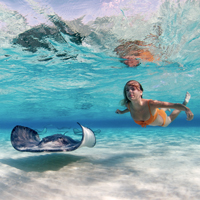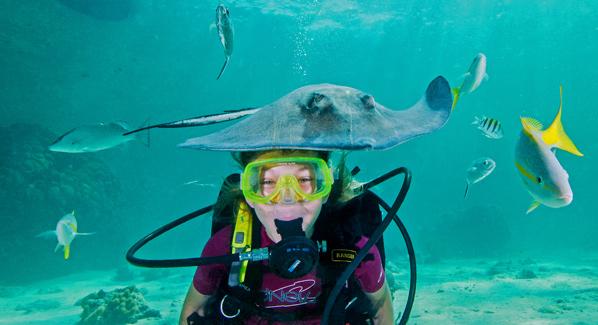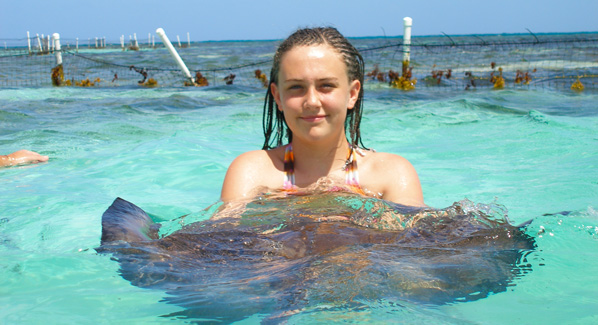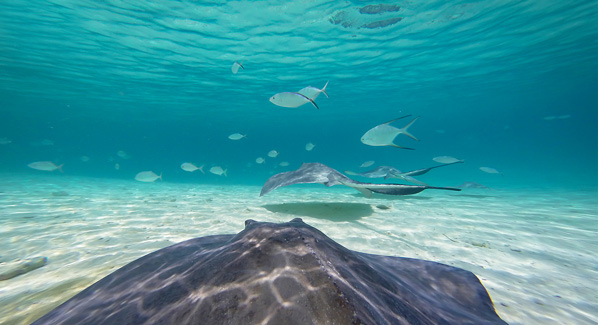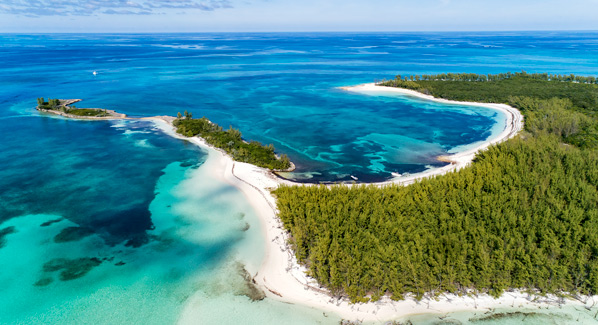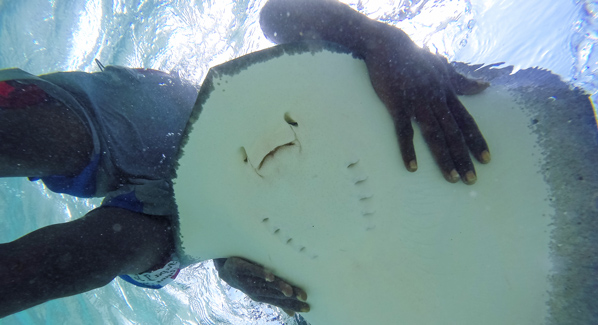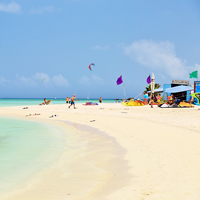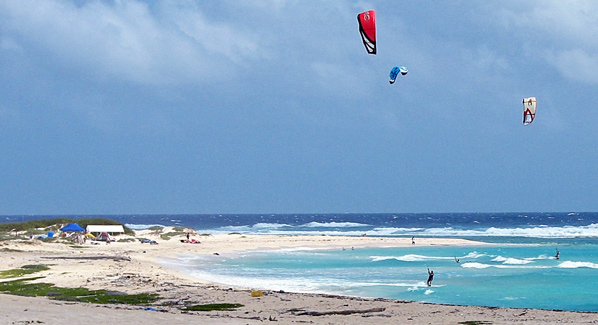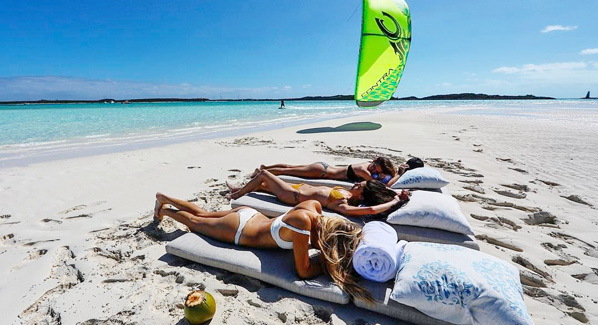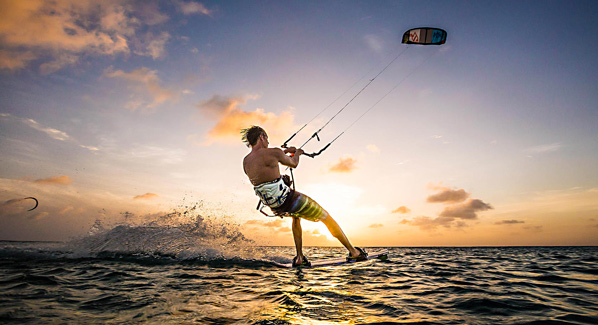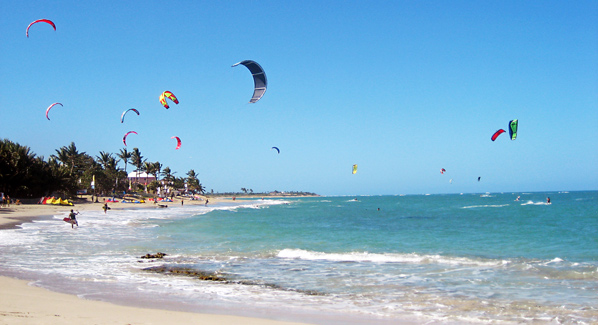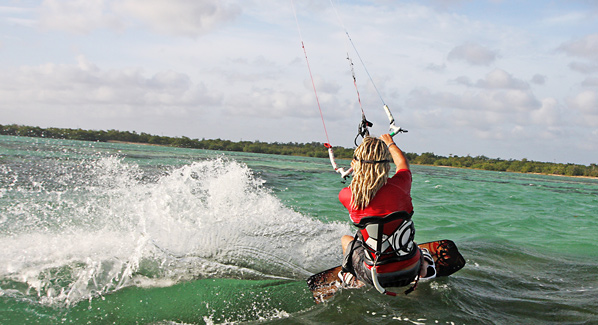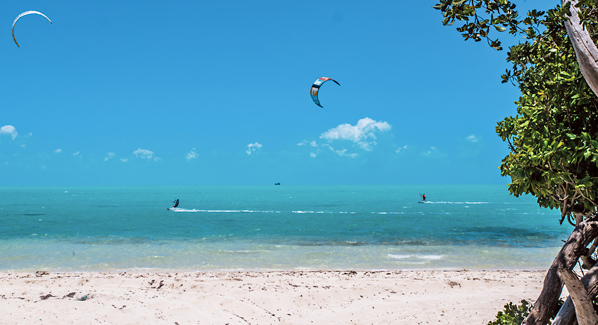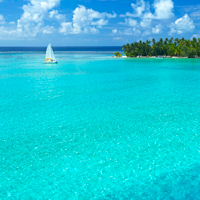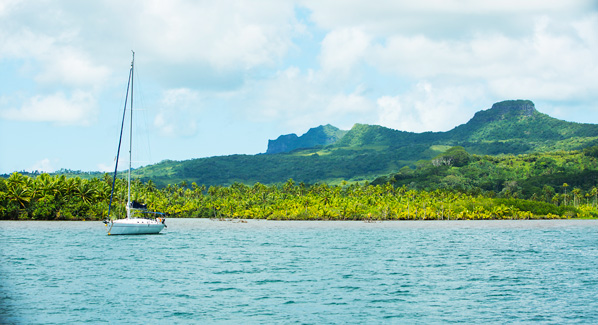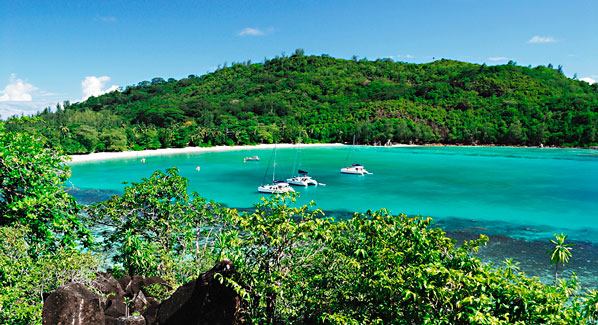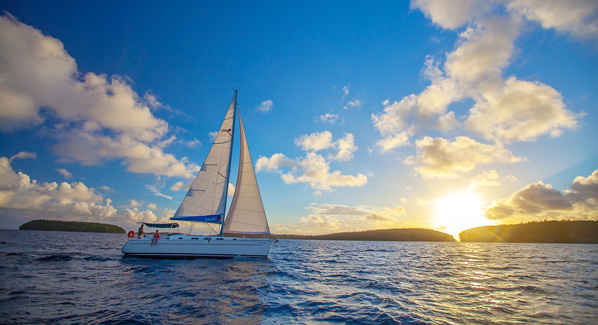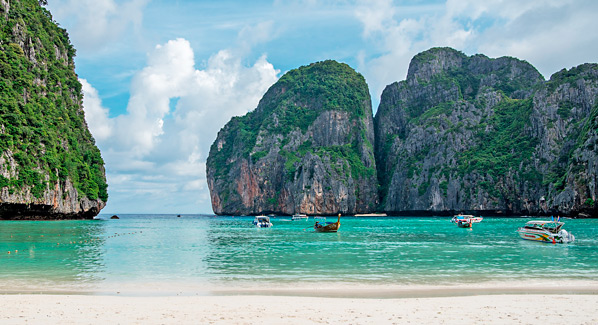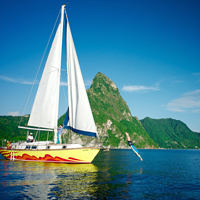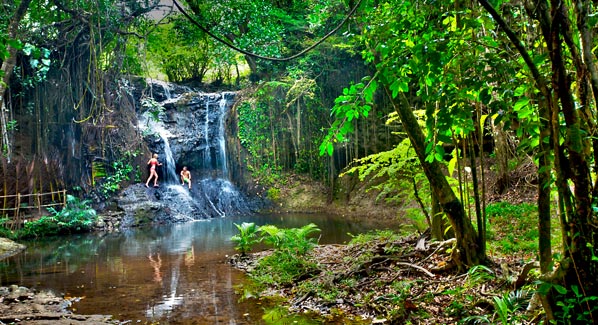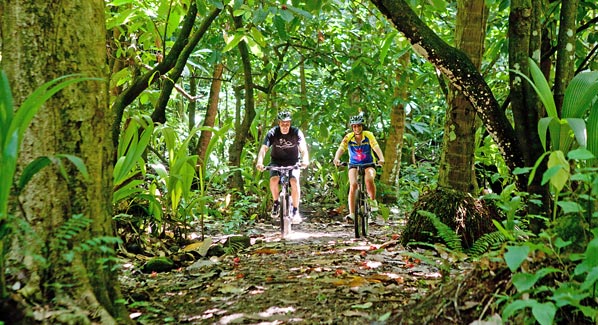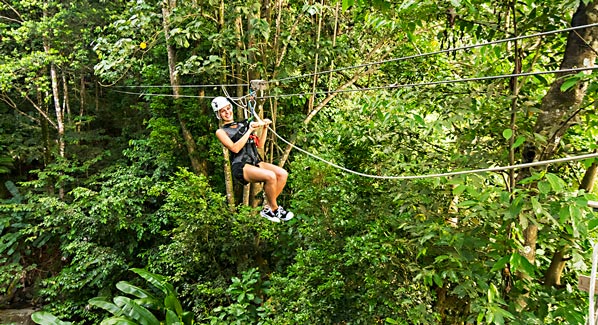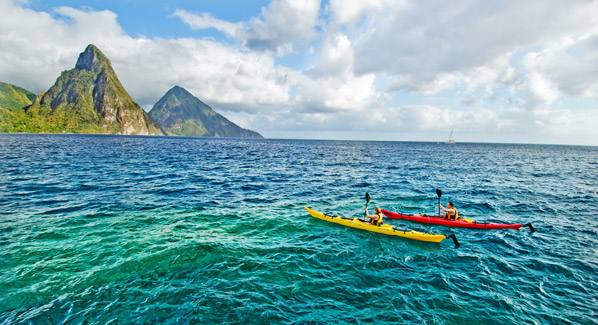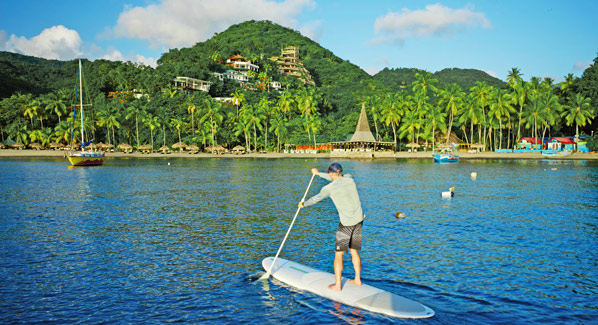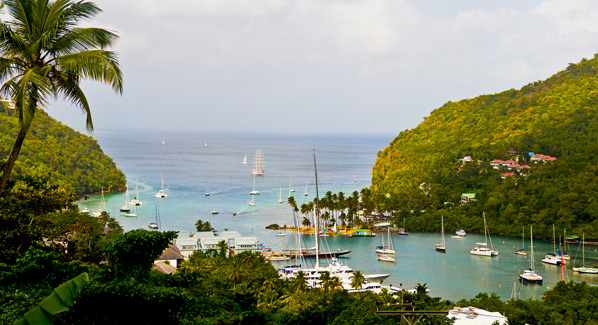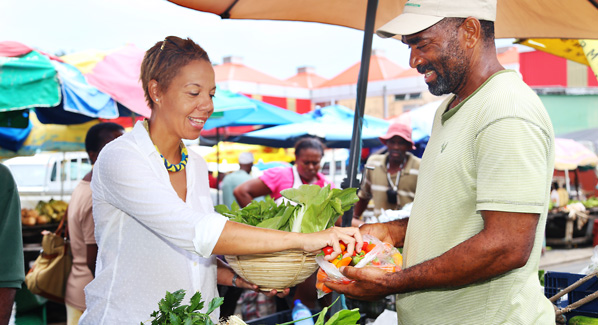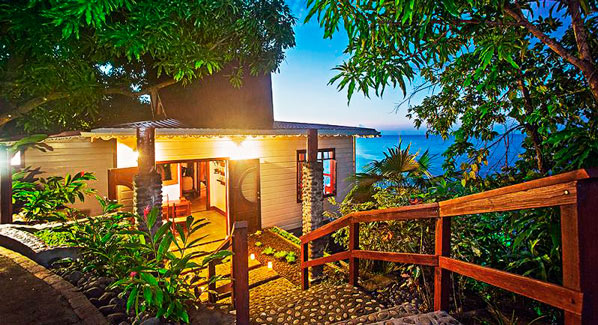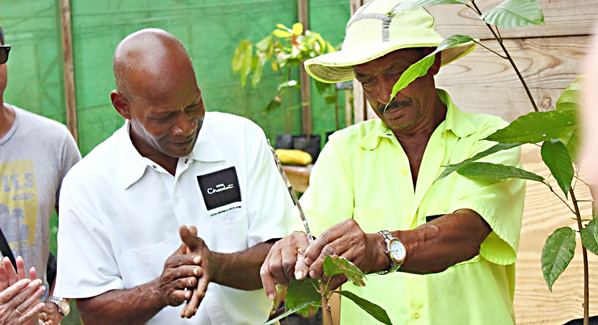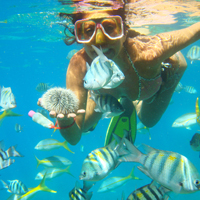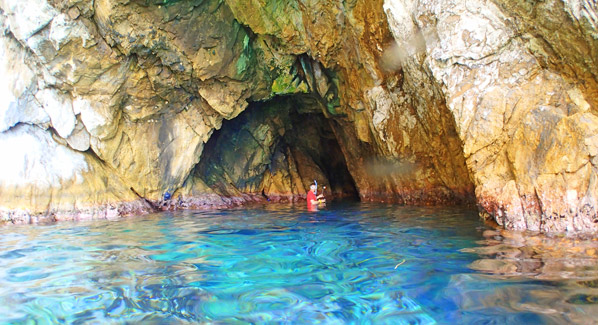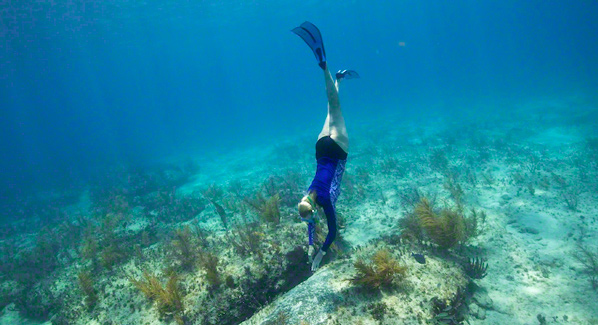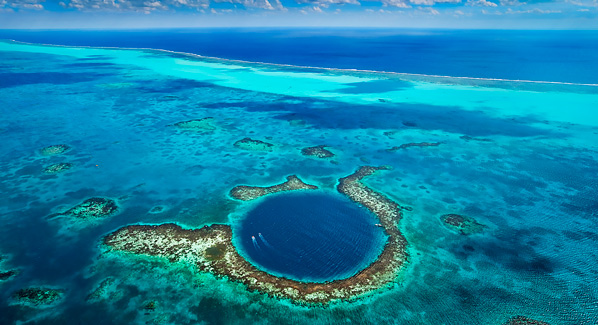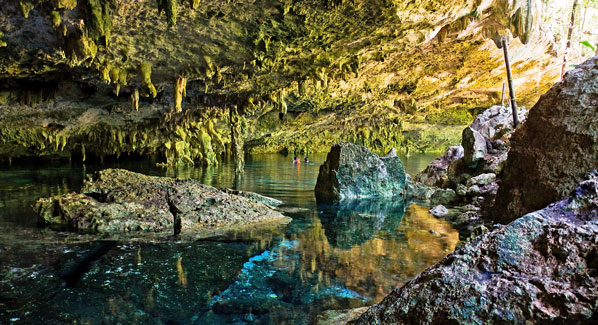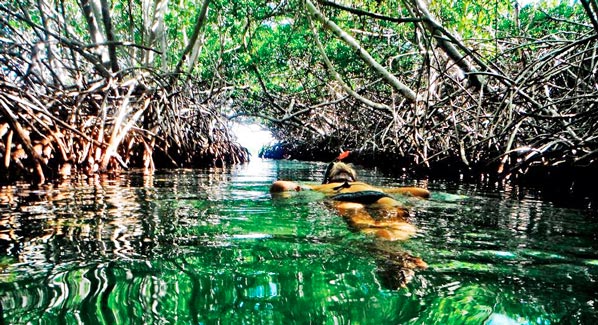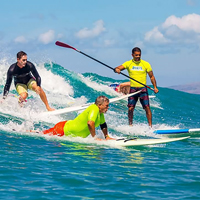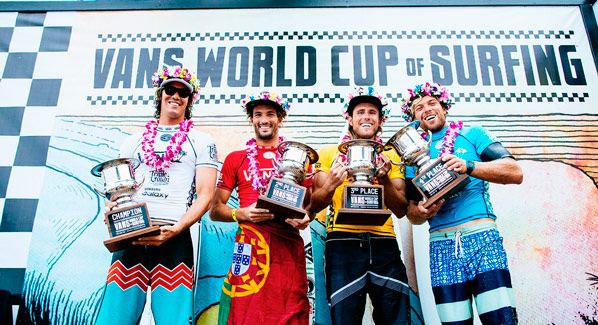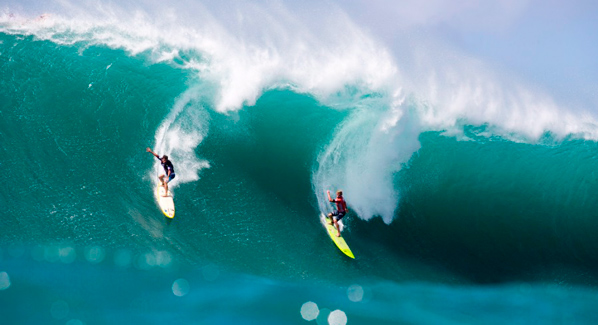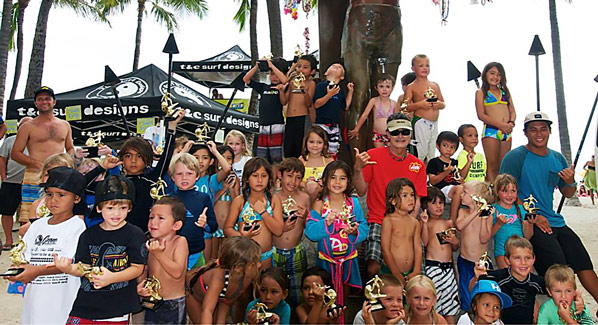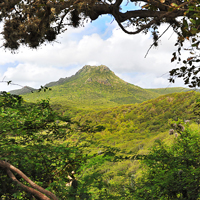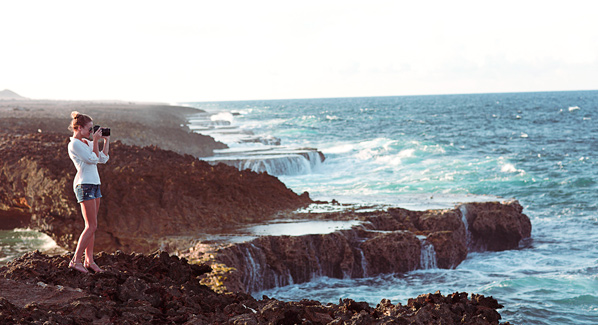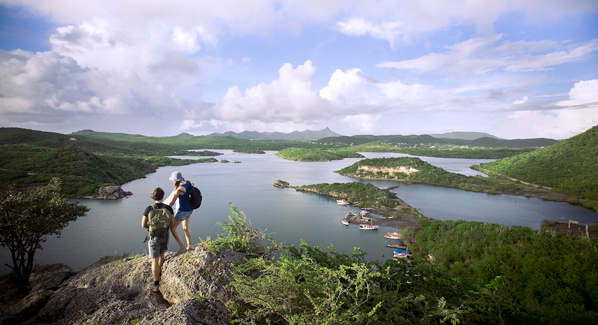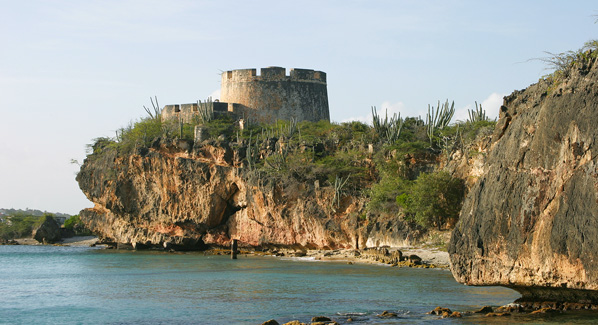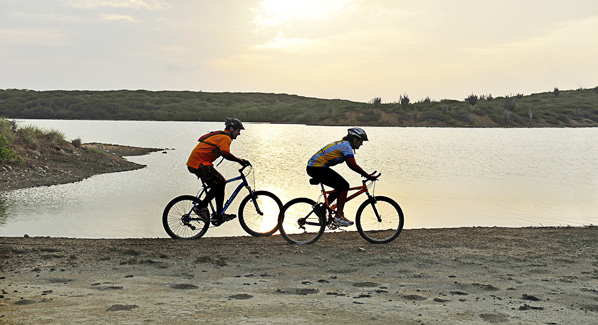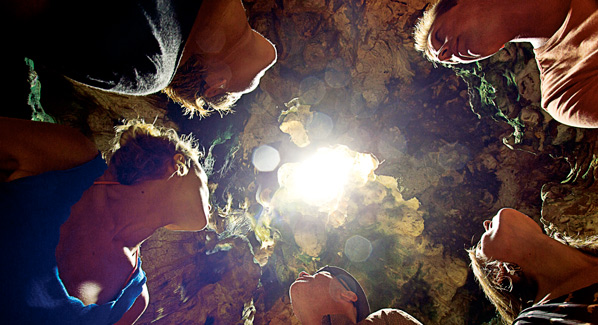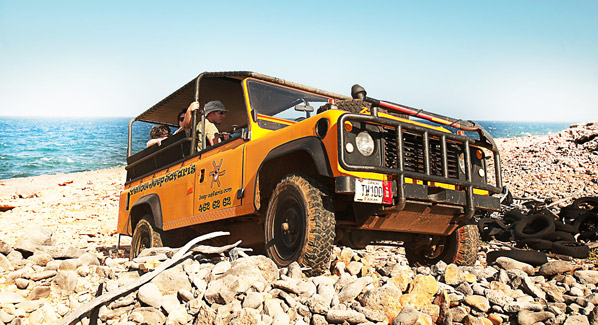Dominica is known as the Caribbean’s Nature Island. Lush rainforests cover 60 percent of the island, some 360 rivers cascade from emerald slopes, and its shores are ringed by colorful coral reefs. All snorkeling in Dominica takes place on the island’s western shores, which are washed in clear Caribbean waters that are sheltered from the prevailing winds and waves that strike the eastern side of the island. Here, the underwater terrain mirrors the island’s volcanic slopes, dropping from shallow shelves into the depths close to shore. As compared to islands with expansive near-shore shallows such as the Bahamas and the Turk & Caicos, Dominica’s snorkel sites are more limited in size. That said, there’s still plenty to explore, and some sites add the excitement of dramatic seascapes where reefs drop precipitously into the depths.
Many of Dominica’s best snorkeling sites lie within a trio of marine preserves. To the south, the Soufriere-Scotts Head Marine Reserve encompasses the profiles of a submerged volcanic crater. The walls of this ancient formation are now decorated with multi-hued corals and sponges, and riddled with caverns and canyons that create marine life havens. Mid Island Salisbury Marine Reserve includes three coral reefs that begin just a few fin kicks from shore. Farther to the north, reefs within Cabrits Marine Reserve run close to shore, giving snorkelers hours of exploration on slopes covered in sea fans and giant barrel sponges. Here are six of Dominica’s must-do snorkeling sites.
Champagne Reef
The island’s most famous snorkeling site is named for the gasses that well up from volcanic thermal springs under the seabed to immerse swimmers in champagne-like bubble clouds. This protected area lies within the Soufriere-Scotts Head Marine Reserve, and its shallow areas are populated with a lively cast of characters that includes hawksbill turtles, octopus, rays, trumpet fish, multi-hued parrotfish, toothy eels, camouflaged frogfish, wing-finned flying gurnards and delicate seahorses. Because this site is a popular cruise ship excursion, it’s best to go when there’s no ship in port.
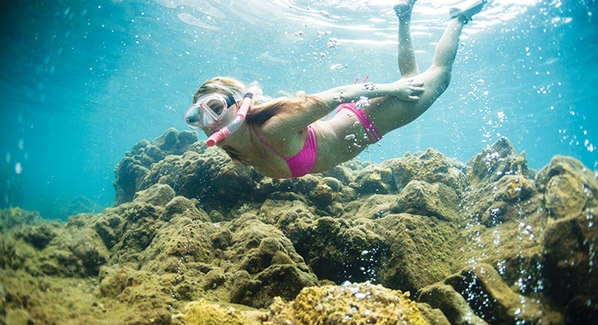
Gas bubbles from an undersea volcanic vent fill the waters of Champagne Reef. Photo: Discover Dominica Authority
Scott’s Head Beach
The waters of Soufriere Bay are sheltered from wind and waves by Scott’s Head Peninsula, which is an above-water extension of the area’s massive underwater volcanic crater. Snorkelers can wade into calm waters right from the beach, and there is a designated snorkeling area free of boat traffic. This site has something for everyone, as the near-shore shallows are ideal for youngsters and less-accomplished snorkelers. Venture a bit farther from shore, however, and the seafloor abruptly drops off the edge of an underwater cliff. Here on the edge of blue water, snorkelers can take in views of coral-covered cliffs, sponge gardens, and underwater pinnacles. There’s also a chance for encounters with big fish, sea turtles, and dolphins. The beach is just a short walk from the quiet waterfront villages of Scotts Head and Soufriere where snorkelers can enjoy lunch or rent equipment from one of the area’s local dive shops.
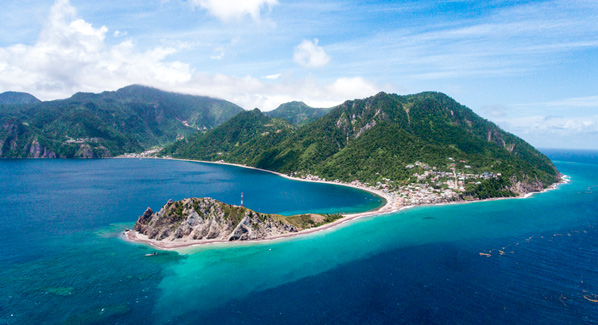
The Scott’s Head Peninsula is the visible remains of a submerged volcanic crater. This spit of land shelters snorkelers from prevailing wind and waves. Photo: Discover Dominica Authority
Solomon Reef
Sitting just to the north of the Soufriere-Scotts Head Marine Reserve, Solomon Reef is a collection of huge coral-covered rock formations scattered across a sand bottom. In addition to healthy hard corals, formations are adorned in multi-colored sea fans, sponges, anemones, and crinoids. This is one of the island’s best places to find sea turtles, and all manner of both juvenile and adult reef fish gather in the shelter of the rocks. Closer looks among the crevices reveal eels and squid on the hunt. The sand seabed provides a habitat for numerous species of shrimp, crabs, and colorful sea slugs.
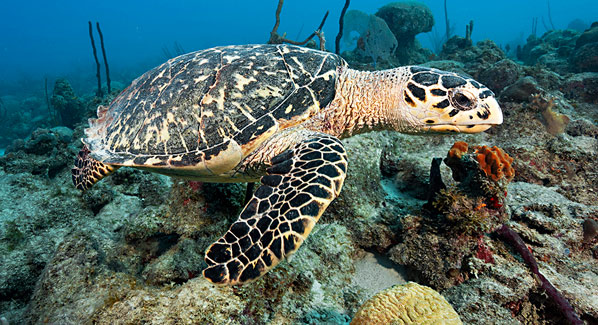
Hawksbill turtles are often seen cruising the shallow coral formations at Solomon Reef. Photo: Walt Stearns
Salisbury Beach
Located within its namesake mid-island marine reserve, this site is a bit off the beaten path, but well worth the effort to find. This tranquil palm-lined beach is low on crowds while having the needed amenities for a day in the water, including a nearby dive center and a funky beach bar for post-snorkel libations. There are three good snorkeling reefs in this area, two of which are best visited by boat, and a third that’s close to shore and easy to reach.
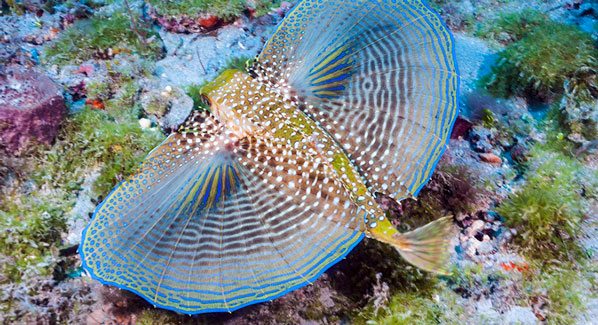
The waters of the Salisbury Marine Reserve are a good place to look for one of Dominica’s most unusual fish, the flying gurnard. Photo: Walt Stearns
Secret Bay
Despite the name, this site isn’t a well-kept secret, though it will take a bit of doing to get to this less- visited snorkel site. Steep coastal bluffs and dense vegetation hinder shore access to this coral reef, leaving boat trips as the best option for most snorkelers. Access is much easier for guests of Secret Bay Resort, which is an eco-luxe property perched atop the bluffs. Guests are provided with complimentary snorkel gear and kayaks and can also join guided snorkel tours — including night snorkeling adventures. In addition to snorkeling the reefs, Secret Bay has sea caves and an Instagram-worthy setting that was featured in the original Pirates of The Caribbean film.
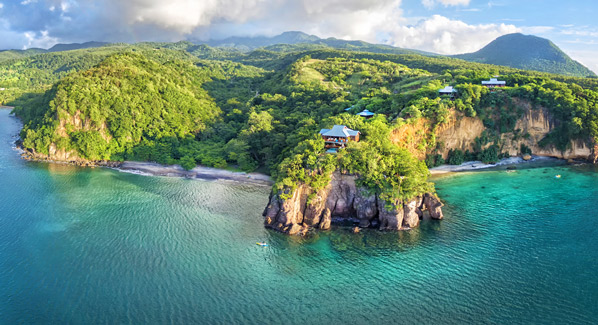
The bluffs above Secret Bay provide a dramatic backdrop for snorkelers and swimmers. This isolated beach is often visited by kayak. Photo: Secret Bay
Douglas Bay
Just north of Cabrits National Park, the waters of Douglas Bay are a favorite with snorkelers staying in the Portsmouth area. The best coral formations start a couple of hundred feet from shore, which won’t phase accomplished swimmers as they ply the typically calm waters. More casual snorkelers can opt for a boat trip from one of the nearby tour operators. The reefs in this area are made up of large boulders now heavily encrusted in corals. Searching the cracks and crevices of this big rock pile yields a wealth of unique marine life finds.
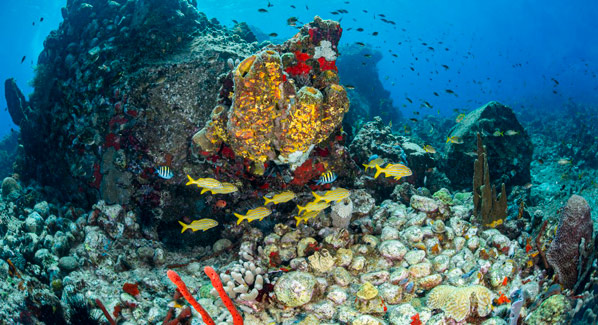
At Douglas Bay, huge boulders covered in corals become home to an intriguing assortment of marine life. Photo: Discover Dominica Authority

